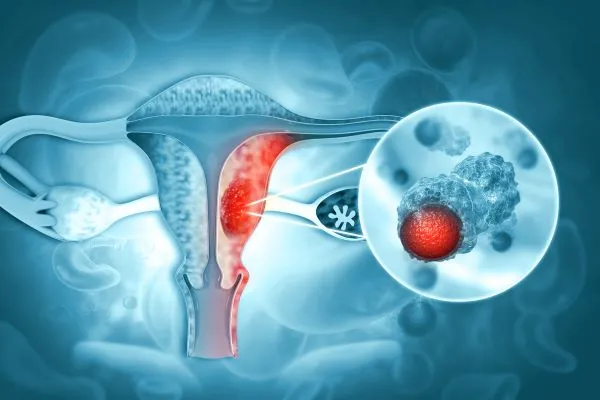Oncology & Hematology Coding Alert
Here’s the Big News in the 2025 Proposed Rule
No big surprise: Another rate cut is coming. The Centers for Medicare & Medicaid Services (CMS) proposed rule for the 2025 Medicare Physician Fee Schedule (MPFS) has dropped, and providers may not be excited about the news within. The proposed rule, which was published officially at the end of July, features strategies for improving care for specific health and social conditions, as well as adjustments to big-picture business aspects of providing medical care. Here are some of the proposed MPFS highlights for oncology, along with some analysis to help you prepare for what could be in store for 2025. Prepare for These Framework Changes One of the big takeaways is the change in reimbursement rate: The proposed conversion factor is $32.3562, reduced from the current $33.2875 amount being paid in calendar year (CY) 2024. The CY 2025 proposed conversion factor of $32.36 (rounded) is a decrease of $0.93 from CY 2024. Interestingly, CMS estimates the proposed CF decrease will not significantly impact oncology practices across the board. Hematology/oncology practices may see a 1 percent decrease in nonfacility allowed charges, but CMS believes facility allowed charges and total allowed charges for the specialty will stay at current levels. In contrast, radiation oncology and radiation therapy centers may get a small bump of 2 percent in facility allowed charges, but nonfacility allowed charges in the specialty might see a 1 percent decrease, with total allowed charges possibly staying at current levels. According to the proposed rule, CMS will continue to lean on quality measures, including establishing four new Merit-based Incentive Payment System (MIPS) Value Pathways (MVPs) for the oncology specialty. They include the following quality measures for the CY 2025 performance period/2027 payment year and future years: CMS is also proposing to continue its development of the MVP program and, in the meantime, updating MIPS scoring methodologies and measure inventories, allowing eligible clinicians to participate in MIPS as CMS transitions to MVPs. Know About Expanded Access Opportunities CMS is also proposing to bolster coverage of some dental procedures that affect the success of certain medical care services, like head and neck cancers, chemotherapy, chimeric antigen receptor T- (CAR-T) cell therapy, and high-dose bone modifying agents (antiresorptive therapy), as well as some immunosuppressive therapies. As part of the proposed rule process, commenters and response from CMS for oncology and late effects of treatment varies based on the MAC’s control on certain coverage allowances. Note These Nitty-Gritty Condition Care Aspects, Too The rule also proposes to improve global surgery payment accuracy via practitioners reporting transfer-of-care modifiers in all transfer-of-care scenarios. The agency believes this would provide more data about how global surgical packages are furnished and thus allow CMS to make more accurate payments. CMS is proposing a new add-on code, GPOC1, for post-operative care services provided by practitioners not involved in the actual surgical procedure. The proposed rule did not contain a descriptor for the new add-on. Understand Evolution of Telehealth Flexibilities During the COVID-19 public health emergency (PHE), CMS allowed some waivers that expanded access to telehealth services. Many of such flexibilities, which were extended temporarily, are set to expire at the end of 2024. CMS is proposing to continue to permit some practitioners to virtually supervise auxiliary personnel. CMS is also proposing that practitioners will be able to use their enrolled practice location instead of their home address when providing telehealth services from their home. However, CMS warns that the statutory restrictions on geography, site of service, and practitioner type in place before the COVID-19 PHE will go back into effect Jan. 1, 2025, unless Congress acts. The agency says they’ll be requesting information to consider whether and how to expand services under the primary care exception umbrella in future rules. But Beware Grim Realities If this rule is finalized, it will mark the fifth consecutive year that CMS has reduced its payments. Meanwhile, predictions about the Medicare Economic Index (MEI), which is a measure of practice cost inflation, show it may increase by 3.6 percent, further widening the gap between the cost of delivering care versus what Medicare pays for that care. “Physician practices cannot continue to absorb rising costs while their payment rates dwindle. The Medicare Physician Payment Advisory Commission (MedPAC) and the Medicare Trustees have issued warnings about the dangers of repeated Medicare cuts and how they threaten access to care. As one of the only Medicare providers without an inflationary payment update, physicians have waited patiently for this change. Medicare physician payment declined 29% from 2001 to 2024, adjusted for inflation,” says Bruce A. Scott, MD, president of the American Medical Association (AMA), in a release about the proposed rule. You can read the entire proposed rule and submit public comment through Sept. 9.

Related Articles
Oncology & Hematology Coding Alert
- News You Can Use:
Here’s the Big News in the 2025 Proposed Rule
No big surprise: Another rate cut is coming. The Centers for Medicare & Medicaid Services [...] - Modifier:
View These 3 Infusion Scenarios, Determine Separate E/M
Hint: Think above and beyond. Modifier 25 (Significant, separately identifiable evaluation and management service by [...] - HIPAA:
Examine These 3 Cases, Stay Safe from HIPAA Violations
Avoid the fate of these healthcare entities with solid training and compliance strategies. HIPAA violations [...] - You Be the Coder:
Beware Assigning High Level MDM for Cancer Dx
Question: If a patient has a cancer diagnosis, should be that be counted as an “acute [...] - Reader Questions:
Look Beyond Reimbursement When Reporting Z Codes
Question: Do the ICD-10-CM Z codes affect reimbursement, or are they strictly for statistical purposes? Washington [...] - Reader Questions:
Distinguish NCD From LCD
Question: What’s the difference between a national coverage determination (NCD) and a local coverage determination (LCD), [...] - Reader Questions:
Know This 2025 BIA-ALCL ICD-10-CM Guideline Update
Question: In addition to the new codes, are there any 2025 ICD-10-CM guideline updates that oncology [...]




